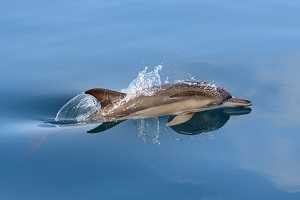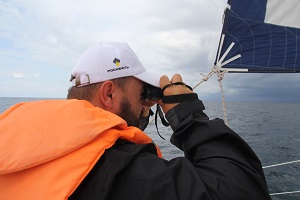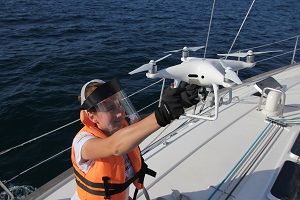Please activate JavaScript in your browser to use all interface options.
Popular Science Publication on Black Sea Dolphins Study Released
03 December 2020
A popular science edition has been prepared and published upon the results of the comprehensive Black Sea dolphins study, the first in 30 years, undertaken with support of Rosneft Oil Company.
The main objective of the project is to obtain up-to-date data on dolphin distribution patterns, numbers, the composition and levels of pollutants, and animal health. The information obtained during the expeditions makes it possible to assess the state of the marine ecosystem as a whole.
 Environmental protection is one of the key priorities for Rosneft Oil Company in its operations. For eight years, the Company has been implementing the projects designed to preserve and restore natural resources, as well as to study animal species, which are the most important bioindicators of the state of the environment. The Company is also implementing the project of biodiversity conservation, which includes the monitoring and studying of the key animal species – polar bear, walrus, ivory gull, and wild reindeer.
Environmental protection is one of the key priorities for Rosneft Oil Company in its operations. For eight years, the Company has been implementing the projects designed to preserve and restore natural resources, as well as to study animal species, which are the most important bioindicators of the state of the environment. The Company is also implementing the project of biodiversity conservation, which includes the monitoring and studying of the key animal species – polar bear, walrus, ivory gull, and wild reindeer.
Black Sea dolphins were studied by scientists of the Shirshov Institute of Oceanology’s Marine Mammals Laboratory. The Institute’s staff plan to submit the popular science publication to the federal and regional state authorities responsible for the conservation of marine mammals and ecosystems of the Black Sea, such as the Russian Ministry of Natural Resources, the Federal Service for Supervision of Natural Resources and other interested organisations.
 As part of the Black Sea dolphin research project, two full-scale marine expeditions were conducted along the entire coast of Krasnodar Krai, each covering about 1,000 km, during which more than 2,000 animals were recorded. In addition, an extensive aerial survey of Black Sea cetaceans was carried out for the first time, covering the northeastern part of the Black Sea, the coast was studied, and comprehensive laboratory tests were carried out.
As part of the Black Sea dolphin research project, two full-scale marine expeditions were conducted along the entire coast of Krasnodar Krai, each covering about 1,000 km, during which more than 2,000 animals were recorded. In addition, an extensive aerial survey of Black Sea cetaceans was carried out for the first time, covering the northeastern part of the Black Sea, the coast was studied, and comprehensive laboratory tests were carried out.
The aerial surveys identified and confirmed areas of high and low cetacean concentration in the study area and provided estimates of cetacean abundance and density. The number of Black Sea cetaceans in the study area was estimated at 15,000-20,000 individuals.
For the first time, a qualitative and quantitative description of their sound signals (whistles), a necessary basis for future acoustic monitoring, was provided for Black Sea dolphins.
Based on the data collected, recommendations for the study and conservation of Black Sea cetaceans as indicator species of the region’s ecological well-being have been developed.
Rosneft
Information Division
December 3, 2020

-315xx70.png)

